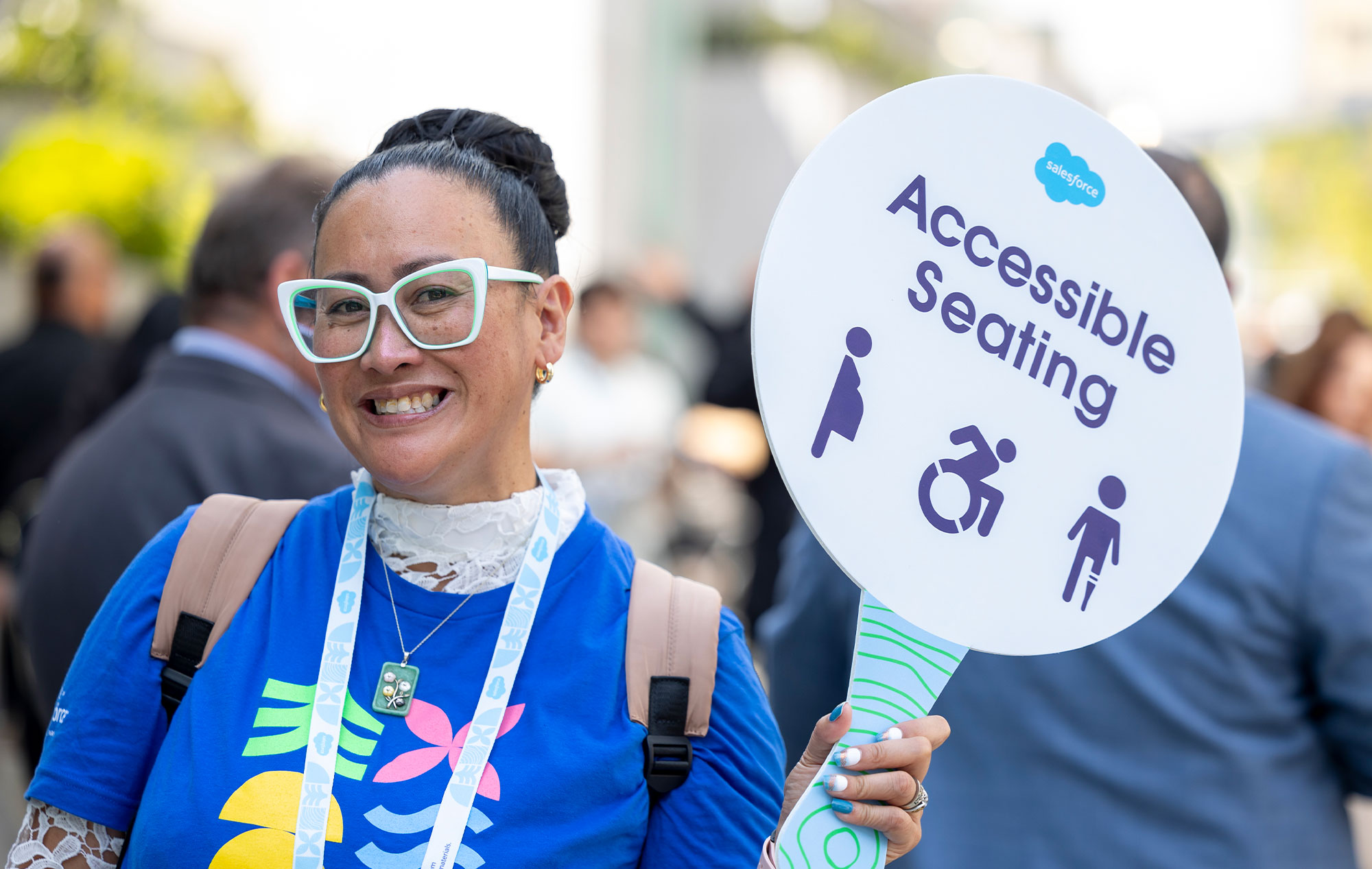Your organization might already be doing some of the proper things to foster a more inclusive culture. Perhaps your digital platforms align with Web Content Accessibility Guidelines (WCAG) for inclusive design, you offer remote working options, and your workplace focuses on amplifying voices of disabled professionals.
Maybe your team even celebrates National Disability Independence Day, International Day of Persons with Disabilities, and Disability Employment Awareness Month.
But what are you doing to guarantee your organization has disability representation in leadership?
Lack of Disability Representation in the Workplace
A pernicious belief persists in the professional world.
Some still operate off of the notion that people with disabilities do not belong in the workplace. They’re perceived as incapable of contributing or fulfilling the responsibilities tied to gainful employment.
A Senior Digital Accessibility Analyst at Salesforce, Crystal Preston-Watson argues this bias is one of the greatest challenges professionals with disabilities face.
“I think it is the perception that people with disabilities are not as productive,” she says. “That is a huge amount of it. And it just really is not the case.”
Preston-Watson believes part of this discriminatory tendency can be explained by the reality that many non-disabled people lack meaningful friendships or relationships with those living with disabilities.
Regardless, for the most part, she doesn’t see disability as something that prevents professionals from meeting the demands common to employment.
“It's like, ‘Oh, someone who is blind, well, they're not going to be able to do anything, there's no way,’” explains Preston-Watson, who was born with ocular toxoplasmosis (a visual impairment in both eyes). “There's the perception that if you're blind, you can't be a developer. I know quite a few blind developers who are better than I could ever be.”
In addition to other barriers to accessibility, this bias perpetuates the well-known “employment gap” among professionals with disabilities. The unemployment rate among working-age Americans living with disabilities is 8.5%, according to an October 2024 report by the U.S. Department of Labor. This is more than double the unemployment level of their non-disabled peers.
The figures are even more abysmal when looking at disability representation among business leaders.
According to the 2024 Disability Equality Index published by nonprofit Disability:IN, of the 755 companies that participated globally, only 11% have “someone who openly identifies as having a disability serving on their company’s corporate Board of Directors.”
While a laudable 5% improvement from the 2022 report, this shortage of professionals with disabilities serving in leadership positions is still disappointing when you consider that roughly 16% of people globally live with disabilities.
Disability Representation in Leadership Matters
By prioritizing disability representation in leadership, organizations experience several beneficial transformations.
Shows a Commitment to Inclusion & Accessibility
Not only is it powerful when we see ourselves in our leaders, but by including professionals with disabilities in key positions of leadership, an organization demonstrates a commitment to the values of accessibility, inclusion, and belonging.
This encourages others to reconsider their biases against people with disabilities, and invites them to reflect on ways they can help remove barriers their disabled colleagues may face in the workplace.
Professionals with disabilities look to leadership positions as an indicator of whether an organization is serious about their stated commitment to inclusion and accessibility.
Ensures Disabled Viewpoints Are Included
Paramount among the many benefits professionals with disabilities bring to an organization are their unique perspectives.
A major reason many companies have been so slow to adopt more inclusive practices is because there haven’t historically been people with disabilities in decision-making positions who could highlight the experiences of living with a disability. In other words, the interests of disabled professionals are easier to ignore when people living with disabilities are not present.
Without professionals with disabilities participating in positions of influence, the impacts of certain policies, technologies, or product design often overlook disabled professionals and their needs.
Furthermore, they have lived experiences their non-disabled peers don’t, which can often lead to innovations and insights that otherwise remain lost to exclusionary organizations and inaccessible team cultures.
“There are over 1 billion people in the world with some form of disability,” explains Sarah Mark, Program Director of Workforce Navigators at Salesforce. “Without them, we are missing out on a huge pool of talent and missing out on an opportunity to understand a huge piece of the consumer market.”
Fosters a Culture of Belonging
When an organization’s leadership doesn’t represent your interests or experiences, it’s difficult to feel a sense of belonging or desire to fully commit to its mission.
Alternatively, having professionals with disabilities in leadership roles helps others living with disabilities feel more comfortable bringing their whole selves to work, ask for accommodations, or share their disability status with colleagues.
Establishing disability representation in leadership also helps normalize the reality that we each orient in the world a little bit differently. By being more open to the divergent experiences of other colleagues, we each have a greater likelihood of feeling acknowledged, learning better ways to help clients and customers, and helping more team members thrive in the workplace.
Leadership Must Involve the Disabilities Community
It’s not enough for an organization to pledge a commitment to greater accessibility and inclusion, implement inclusion interview processes, adopt accessible digital design, or hire professionals with disabilities.
Disability representation in leadership is vital.
Building Dedicated Accessibility Leadership: A Success Story
When organizations commit to disability inclusion at the highest levels, transformative change becomes possible. For instance, InclusionHub's founding partner Salesforce experienced this through its establishment of a dedicated Office of Accessibility in 2019—an initiative that exemplifies how executive advocacy can accelerate organizational transformation.
The creation of this dedicated accessibility function arose from a powerful combination of grassroots employee advocacy and executive championship. Employee resource groups identified key decision-makers who could drive institutional change, while senior leadership, including the company's president and CFO, provided crucial executive sponsorship.
"From an employee's standpoint," explains Mike Raabe, president of the employee resource group Abilityforce, "it ensures that we're receiving all employees in need of accommodations and providing them with resources. We have a fund that helps support that directly. It's making sure the real estate is accessible for not only the employees but our customers and partners—anyone who comes into our ecosystem. We want them to have a good experience."
This organizational commitment extended beyond internal operations when the company joined the Valuable 500, a global initiative challenging influential businesses to prioritize disability inclusion in their leadership agendas, including:
- Growing disability representation across all levels
- Developing accessible products that exceed compliance standards
- Implementing universal design principles in workplace design
- Enhancing accessibility in events, tools, and communications
The creation of Salesforce’s Office of Accessibility illustrates how dedicated accessibility leadership, backed by C-suite support, can create systematic change. When organizations establish formal accessibility functions with executive backing, they demonstrate a genuine commitment to disability inclusion that extends beyond surface-level initiatives.
Championing Accessibility Authentically
If your company is authentically dedicated to overcoming the employment gap and improving working conditions for the disability community, then you must hire and retain professionals with disabilities in the upper echelons of leadership.
“Drawing on this wisdom from the disability justice movement: ‘Nothing about us without us.’ This principle should guide your business practices,” says Brandon Melnyk, a Mentor of Specialized Skill Building at MOKA, an organization that serves adults and children with developmental and intellectual disabilities. “If you hope people with disabilities might be customers of yours, you need us at all levels of the company.”
Salesforce is a founding partner of InclusionHub, a comprehensive online resource directory and content hub dedicated to helping businesses become more accessible and inclusive.






Leave a Comment